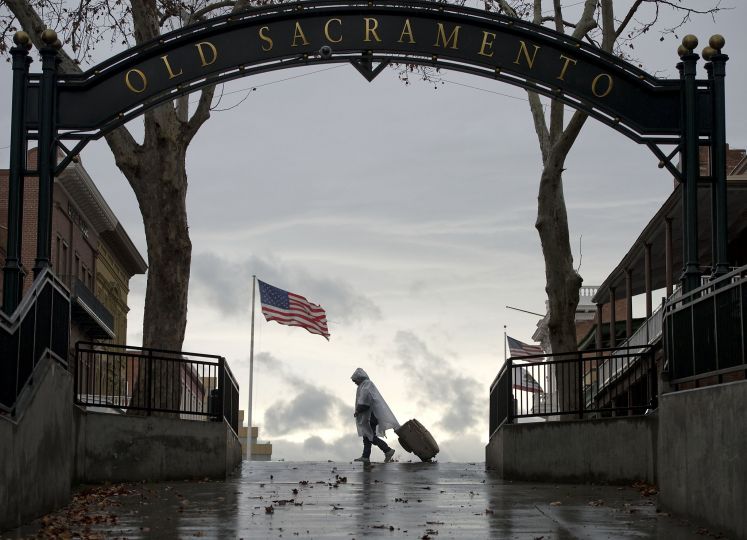Northern California is bracing for another powerful rainstorm this week, as the National Weather Service predicts 3 inches of rain to fall on San Francisco between Wednesday and Thursday night, and up to 8 inches to fall in higher elevations. If those rainfall predictions prove accurate, the storm would be the wettest to hit the Bay Area since October 2009.
Last week, San Francisco and other cities saw three inches of rain in a prolonged rainstorm, while the mountains got about six inches. All of this wet weather means that after Thursday, the Bay Area could have 60 percent more rain than average to this point in the season.
In addition to the rain, the National Weather Service predicted the region could see wind gusts between 25 and 35 miles per hour.
The San Francisco Chronicle reports that Bay Area utility crews were busy Tuesday trimming trees close to power lines, while public works departments worked to clear leaves and other debris from storm drains, even recruiting volunteers to assist. The San Francisco Public Works Department had reportedly handed out 3,500 sandbags by Tuesday afternoon, in anticipation of flash flooding.
Craig Peterson, of Arbor Works Tree Service, told the Chronicle the wind could pose serious problems for Bay Area residents.
“I would expect that this is going to bring a lot of work,” Peterson said. “The most well-rooted tree will fail if the wind is high enough and the soil liquefies. You’ll see even nice trees that are well rooted come down.”
Still, at least one Northern California city heard some good news out of the coming storm. On Monday, the city of Santa Cruz announced that it would end its mandatory water rationing program, according to the Chronicle.
The city implemented a water rationing program in May in an effort to combat the state’s historic drought. Households in Santa Cruz were reportedly limited to 249 gallons of water per household per day.
Now, thanks to the recent storms, the city’s 175-acre Loch Lomond Reservoir sits at 62 percent capacity, and the region’s watershed reportedly recorded 14 inches of rain since October 1, more than double the 6.7 inches the region averages at this time.
“We just felt that our customers have shown their commitment to conserve,” water department spokeswoman Eileen Cross told the Chronicle. “In return, we have to show that we’ll require mandatory rationing only when it’s absolutely necessary. And it’s not absolutely necessary.”
Wednesday’s storm is also predicted to drop up to 3 feet of snow on the Sierra Nevada mountains, according to the National Weather Service. This snowpack is a crucial source of rain for the State Water Project, which sends the runoff south through Central and Southern California.

COMMENTS
Please let us know if you're having issues with commenting.